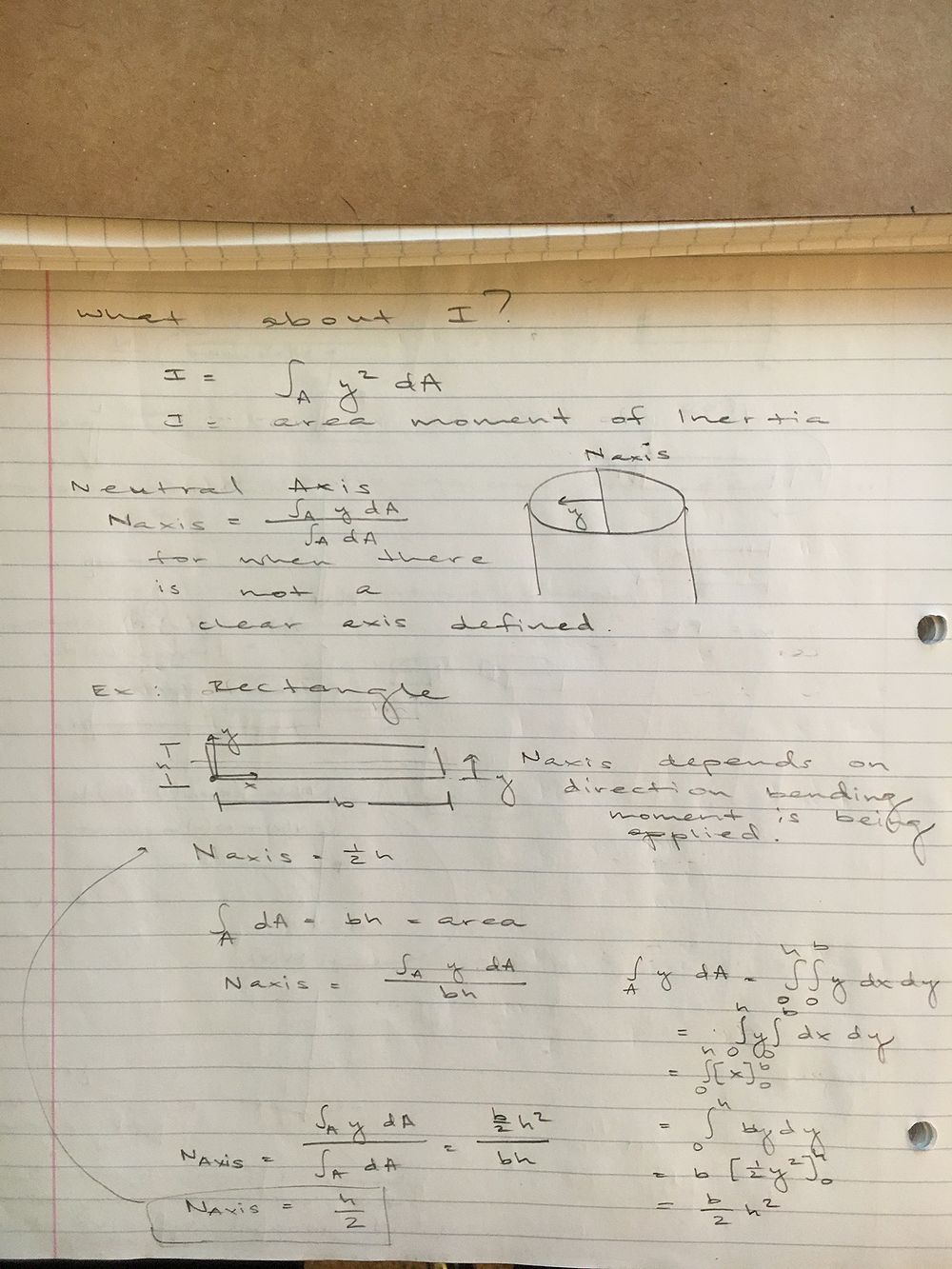Inertia: Difference between revisions
Dmandavia3 (talk | contribs) |
Lkrishnan7 (talk | contribs) |
||
| Line 43: | Line 43: | ||
Anything in life involving motion is inertia, whether it is you walking, riding a scooter, or running. A ball's motion or lack of motion is inertia as well. An everyday example of inertia would be a car in motion. As a car accelerates and attains a higher velocity, the amount of momentum of the vehicle increases. A higher inertia makes it more difficult for a car to brake quickly and come to a halt in an emergency scenario. | Anything in life involving motion is inertia, whether it is you walking, riding a scooter, or running. A ball's motion or lack of motion is inertia as well. An everyday example of inertia would be a car in motion. As a car accelerates and attains a higher velocity, the amount of momentum of the vehicle increases. A higher inertia makes it more difficult for a car to brake quickly and come to a halt in an emergency scenario. | ||
(Edit by Lakshmi Krishnan (lkrishnan7)) | |||
Take the scenario of a car accident, for example. | |||
'''Scenario''': At a stop light, a car halts and waits for a green. However, the car behind it doesn’t stop in time, and bumps the in front of it, from the behind. | |||
'''Report''': This has almost everything to do with law of inertia, or Newton’s 1st Law. In Newton’s first law, he states that an object at rest stays at rest, or an object in motion will stay in motion, unless acted upon by an unbalanced force. That is, if an object (be it a head, moving at a certain velocity because of the car) will tend to stay at the same speed and in the same direction, unless something stops it. Back to the scenario: In a way, it’s a good things this lady was wearing a seatbelt... it slows down the inertia. For example, if a kid was in the car, and was NOT wearing a seatbelt, people would think that the kid launched forward. Really, it’s just that the car is brought to a halt, but the kid just continues at their original velocity. This is inertia in action -- that is, the tendency to resist change in the state of motion they are already in. However, in this case, the seatbelt was (kind of!) bad, as it caused the overextension of head. The head weighs around 4-5 kilos, and we know that when car comes to a sudden halt, body is stopped, skull continues on, it’s called whiplash. In this case, when the person bumped into the other car from behind... your car is stunned forward, body with it... head is stationary, is remaining in the same, position, the lady’s car’s inertia wants to stay where it was originally. The body was moved, but the head wanted to stay in its original velocity, but followed the body in the seconds after. | |||
'''Conclusion''': If the lady complains of any neck pain, it’s probably because of inertia, and the possibility that the lady has overextended her neck beyond elastic limits. She will be wearing a neck brace if this is the case! | |||
== See also == | == See also == | ||
Revision as of 15:01, 8 April 2017
Claimed by Dev Mandavia
In kinematics, momentum and inertia, while similar, are very different entities. Momentum usually refers to mass that is undergoing translational motion and is defined as the mass multiplied by the mass's corresponding velocity component. Inertia is the resistance to changes in the motion or projected motion of a specified body of mass. It can exist in terms of a standard moment of inertia or a rotational moment of inertia, which is the resistance to changes in the rotation or projected rotation of a specified body of mass.
The Main Idea
The motivation behind the quantifiable term known as inertia is to have the ability to study and predict the motion of systems of specified mass in terms of torsion, translation, and deformation.
History
Before the Renaissance period, the theory of motion that reigned was garnered by Aristotle who claimed that "in the absence of external motive power, all objects [on Earth] would come to rest and moving objects would only continue to move so long as there is power inducing them to do so."[1]
Galileo performed an experiment with two ramps and a bronze ball. To begin, the two were set up at the same angle. Galileo observed that if a ball was released at one height, it would roll to the same height at which the ball was released. He then experimented with altering the angle of the second ramp. He concluded that even though it may take longer, when the angle is smaller, the ball will still roll up to the same height. Because the height was conserved, Galileo believed that if a ball was rolled from a ramp to a flat surface, it would stay in motion unless a force stopped it.
Newton delved deeper on past assertions regarding laws of motion with his concept that objects in motion tend to stay in motion unless acted on by an external force; some examples for external forces in the real world are: gravity, friction, contact, etc. This definition remained unchanged event in Einstein's theory of special relativity as proposed during the 20th century.
Calculating Inertia
The formula for the standard moment of inertia, typically denoted as I, depends on what the particular statically determinate object is as well as its rotational axis.
Calculating the polar moment of inertia, typically denoted as J, depends on what the deformable body is and also depends on the rotational axis; the cross sectional area, distance from the center of mass, and projected deformation are also key components. J comes from the relationship between the total internal torque at a cross section and the stress distribution at a cross section.
Examples
Area Moment of InertiExample.jpg:
Polar Moment of Inertia Example:
Relationship to Modern Day Life
Anything in life involving motion is inertia, whether it is you walking, riding a scooter, or running. A ball's motion or lack of motion is inertia as well. An everyday example of inertia would be a car in motion. As a car accelerates and attains a higher velocity, the amount of momentum of the vehicle increases. A higher inertia makes it more difficult for a car to brake quickly and come to a halt in an emergency scenario.
(Edit by Lakshmi Krishnan (lkrishnan7))
Take the scenario of a car accident, for example.
Scenario: At a stop light, a car halts and waits for a green. However, the car behind it doesn’t stop in time, and bumps the in front of it, from the behind.
Report: This has almost everything to do with law of inertia, or Newton’s 1st Law. In Newton’s first law, he states that an object at rest stays at rest, or an object in motion will stay in motion, unless acted upon by an unbalanced force. That is, if an object (be it a head, moving at a certain velocity because of the car) will tend to stay at the same speed and in the same direction, unless something stops it. Back to the scenario: In a way, it’s a good things this lady was wearing a seatbelt... it slows down the inertia. For example, if a kid was in the car, and was NOT wearing a seatbelt, people would think that the kid launched forward. Really, it’s just that the car is brought to a halt, but the kid just continues at their original velocity. This is inertia in action -- that is, the tendency to resist change in the state of motion they are already in. However, in this case, the seatbelt was (kind of!) bad, as it caused the overextension of head. The head weighs around 4-5 kilos, and we know that when car comes to a sudden halt, body is stopped, skull continues on, it’s called whiplash. In this case, when the person bumped into the other car from behind... your car is stunned forward, body with it... head is stationary, is remaining in the same, position, the lady’s car’s inertia wants to stay where it was originally. The body was moved, but the head wanted to stay in its original velocity, but followed the body in the seconds after.
Conclusion: If the lady complains of any neck pain, it’s probably because of inertia, and the possibility that the lady has overextended her neck beyond elastic limits. She will be wearing a neck brace if this is the case!
See also
Newton's Laws and Linear Momentum





